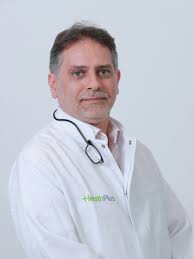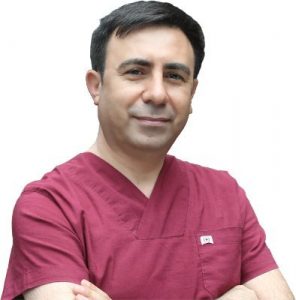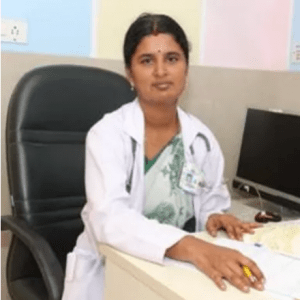Varicocele is characterized as the enlargement of the veins in the scrotum. The scrotum is the loose skin that holds the testicles, varicocele is almost similar to a varicose vein in the leg. Although varicocele is a common problem among males without much harm, it can cause discomfort after overtime.
It is common among younger males from about 15 to 25 years and is found in about one out of six males. Varicocele causes infertility in males as the sperm quality and quantity decrease. According to a study, about 40% of men have varicocele in at least one of their testicles.
The condition not only affects the production of sperm but also causes the testicles to shrink thus they fail to develop normally – It frequently occurs on the left side of the scrotum.
Diagnosis and treatment of varicocele
Diagnosis involves a physical test by a physician conducted in a standing position. If it is hardly detectable then further procedures like ultrasound are utilized – which detect the backflow of blood and thermography. To check the gravity of the problem physicians measure the increased mass on a scale of ‘0 to 3’ – 3 shows that the mass is easily noticeable in the scrotum.
Though the most common treatment is open surgery, the best nonsurgical treatment is varicocele embolization. This is performed by radiologists with the help of images for supervision. A contrast dye is injected in the groin for a proper image of the veins. By applying pressure, blood flow is directed correctly. This treatment usually takes 1 to 2 days for recovery compared to surgery which is 10 to 14 days.
Advantages- equally effective as the surgery, less recovery time as compared to surgery, no risk of infection, no anesthesia is required, no cut or incision in the groin, and affordable than surgery.
Not all varicocele need surgery but in case of pain or problem of fertility – For this purpose, varicocelectomy surgery is considered. This is an open surgery of the scrotum and its types are laparoscopic varicocelectomy, open varicocelectomy, microsurgical varicocelectomy, inguinal ligation, and sub-inguinal ligation.
Before surgery, some important tests are conducted like hemoglobin, blood test, x-ray, CR scan, and urine test.
One may need to be admitted to the hospital before surgery. Anesthesia is given so that patients will not experience any pain. If local anesthesia is given, it will be injected in the affected area. However, incision or cut depends on the type of surgery – As sublingual surgery is performed, the cut made is directly in the groin; the procedure is similar for inguinal ligation.
In another ligation surgery, a cut is made in the lower abdomen – the lump is detected and the dilated vein is treated. It includes some complications like a blood clot or swelling or pain in the area treated for some time. The patient can return to work after 5 days, but slight pain can be felt in the operated area for 2-3 weeks. As the scrotum may be swollen and bruised – it can intensify the pain.
- Microscopic varicocelectomy
This treatment is performed with a high-quality microscope for better results. It is divided into two parts sublingual and inguinal.
In this treatment, a cut is made above the groin, then the spermatic cord is cut to inspect the area. The surgery is performed to keep the arteries and lymphatic drainage intact. Damage to any of them may disturb the functioning of the testicles, sperm flow may be blocked and the scrotum gets filled with the lymphatic fluid.
The microscopic surgery is less risky and takes one hour to complete – half-hour reserved for each side. Complete healing takes 2-3 weeks but after two to three days the patient can return to their regular routine.
- Laparoscopic varicocelectomy
The laparoscopic surgery is done in three phases using carbon dioxide and needle for injecting purposes. The needle is toppled into the abdominal tissue area, carbon dioxide is pumped – it flows through the abdominal area. The surgery is initiated when the gas stops flowing and settles down.
The varicocele occurring on the left side can be hard to work upon – on the other hand, the right side is easily scrutinised and operated first. Once every artery is checked carbon dioxide is decompressed and the presence of scar is checked.
This process, on the whole, takes at least one hour and the patient will recover after 5-6 hours. However, hospital discharge depends on the physician – although, in most cases, the patient is discharged on the same day as the procedure is commenced. Physical activities or exercises are prohibited for 2-3 weeks altogether.
Advantages- effective results, increased sperm quality, immediate relief from suffering and beneficial in improving sperm production and no unnecessary recall from the physician.
Disadvantages- high in cost, swelling around the operated part, slight pain for weeks after surgery and precautions have to be taken for lessening discomfort and overnight fasting is required if local anaesthesia is given.
Symptoms
The symptoms of Varicocele are; pain – caused rarely, discomfort is frequent which ranges from dull to sharp, infertility, testicles might be enlarged and swollen, discomfort may increase over a long period of physical strain, standing for a long time can often increase pain.
Causes
Each testicle is held up by a spermatic cord which contains veins, nerves and arteries to support the glands. These veins in the cord have valves which help the circulation of blood from the testicles to the scrotum. The other half of the valve circulates the blood back from scrotum to the heart.
Sometimes, this blood flow gets interrupted, and the situation which arises from hindered blood flow by the valves inside the veins is referred to as the varicocele. This results in the veins to dilate (widen) which, in turn, worsens fertility and damages the testicle – Varicocele is a common occurrence in puberty.



































